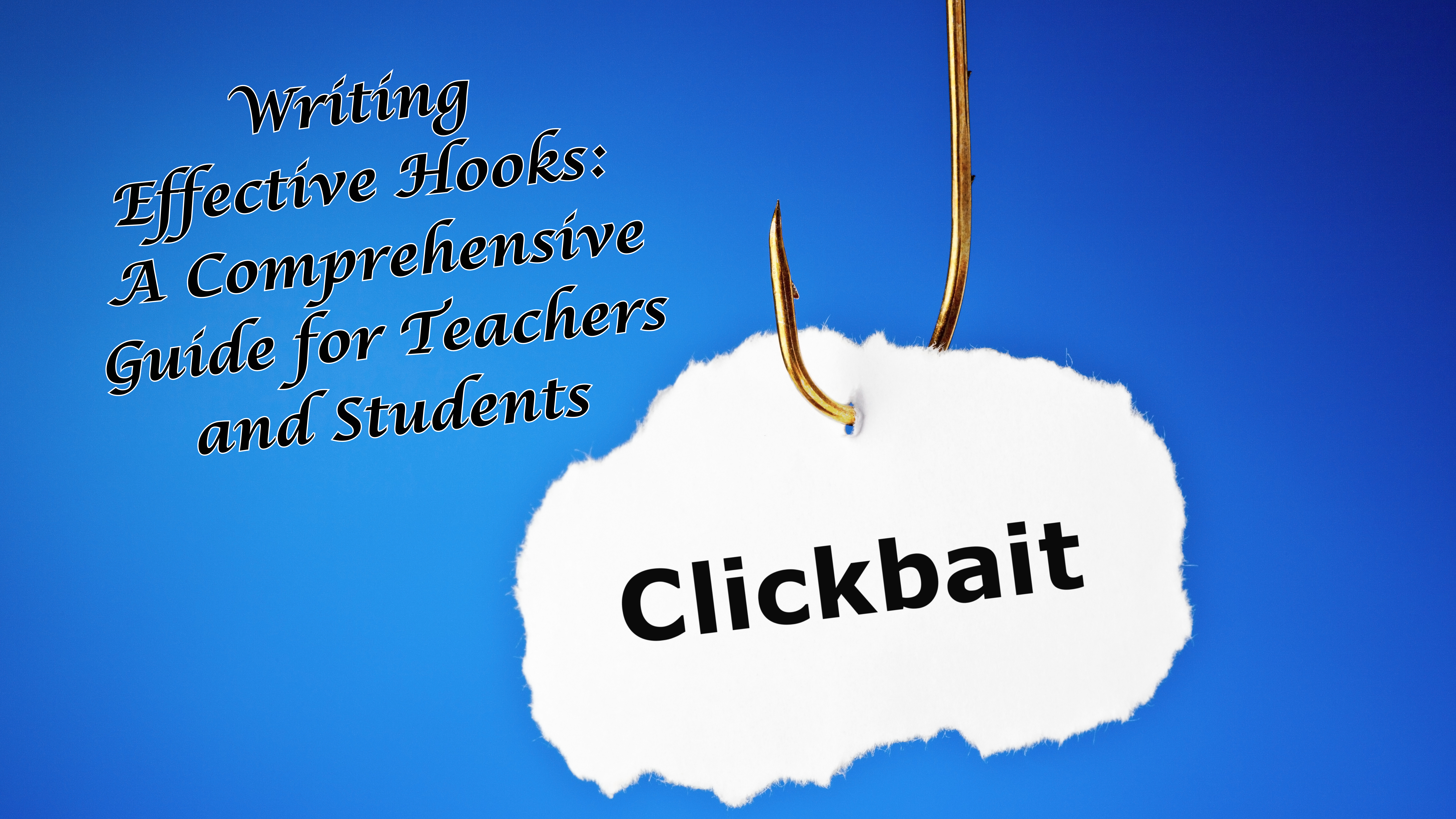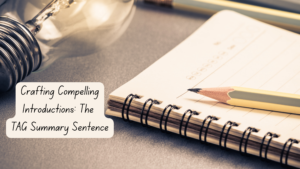The power of an engaging introduction cannot be overstated in the writing world. Whether you’re a teacher striving to inspire your students or a student looking to ace your next essay, the ability to hook your readers right from the start is a valuable skill. After all, the first few lines of your writing can make or break the reader’s interest. This comprehensive guide will delve into the art of crafting effective introductions that captivate your audience and keep them engaged throughout your piece.
Understanding the Importance of a Strong Introduction
- Setting the Tone: An introduction sets the tone for the entire piece. It prepares the reader for what’s to come, making it essential to grab their attention and align their expectations with your content.
- Hooking the Reader: It’s helpful to consider their psychology to understand why hooks work. Hooks tap into the reader’s natural curiosity and desire for resolution. By introducing an intriguing question, a compelling story, or an unexpected fact, you create a sense of anticipation and curiosity that compels readers to keep going. A well-crafted introduction is a literary hook, pulling the reader into your narrative, argument, or story. It sparks curiosity and encourages them to continue reading.
- Establishing Credibility: For writers, a strong introduction can establish your expertise and credibility in the classroom. For students, it showcases your understanding of the topic and ability to communicate effectively.
Techniques for Crafting Effective Introductions
Now, let’s explore some tried-and-true techniques to help you create introductions that leave a lasting impression:
1. Start with a Relevant Story
Begin your introduction with a relatable and compelling story or anecdote. This can be a personal teaching experience for teachers, while students can draw from their own life stories. Connecting on a personal level immediately engages your audience.
2. Ask Thought-Provoking Questions
Pose a thought-provoking question in your introduction. This encourages critical thinking and draws readers into your topic. It can be a question related to the subject matter or questions that relate to the essay’s focus.
A common struggle, especially among amateur writers, is finding a question that won’t have a simple answer. One tip – who says it has to be one question? Ask a series of questions that draw the reader in. For example, “Why is the sky blue? Why did the chicken cross the road? What is the answer to life, the universe, and everything?” A series of questions can lead your reader’s brain in your desired direction.
3. Use Powerful Quotations
Incorporate relevant quotations from experts or well-known figures. This can add credibility and real-world application for your readers. However, not just any quote will do. When using quotations, make sure they align with your topic and argument. Analyze the quote briefly to demonstrate its relevance.
4. State a Surprising Fact
Share an odd fact or shocking statistic that relates to your topic. This can be particularly effective in capturing your audience’s attention and making them curious to learn more.
5. Employ Vivid Imagery
Paint a vivid picture with your words. Use descriptive language to create a mental image for your readers. This technique can be equally powerful for teachers and students in setting the scene for your content. For example,
“Amelia stood at the crossroads of her life, torn between two paths that stretched before her like diverging destinies. One path was bathed in the warm, golden hues of familiarity, where the comfort of the known beckoned her with open arms. The other, shrouded in mist and dappled with tantalizing glimmers of the unknown, whispered promises of adventure and growth. As she hesitated, her heart pounded like the erratic flutter of a trapped bird, caught between the safety of the cage and the allure of the boundless sky.”
In this brief description, the reader can vividly imagine Amelia’s inner struggle and the tension between her choices, conveyed through descriptive language and imagery.
Tailoring Introductions for Different Types of Writing
Depending on your writing goals, you must adapt your introduction accordingly. Here’s how you can tailor your introductions for various types of content:
1. Academic Essays
To hook a reader effectively in academic writing, focus on presenting a clear and compelling thesis statement right from the start. Provide context for the topic’s significance and briefly outline your approach or key arguments. Emphasize the relevance of your work within the academic field and reference important literature when applicable. Keep your introduction concise and purposeful, ensuring it offers a roadmap for the reader, guiding them through your academic essay with clarity and engagement.
2. Creative Writing
Your introduction can be more experimental in creative writing, such as storytelling or poetry. Engage the reader’s imagination, perhaps with an intriguing character or setting description.
Example 1 – Novel Introduction: “Moby-Dick” by Herman Melville
“Call me Ishmael. Some years ago – never mind how long precisely – having little or no money in my purse, and nothing particular to interest me on shore, I thought I would sail about a little and see the watery part of the world. It is a way I have of driving off the spleen and regulating the circulation.”
In this iconic opening of “Moby-Dick,” the narrator, Ishmael, immediately draws readers into his world with a distinctive first-person voice and a hint of mystery. The simple phrase “Call me Ishmael” invites readers to connect with the narrator personally, while the desire to “see the watery part of the world” sparks curiosity and sets the stage for the adventurous journey that follows.
Example 2 – Poem Introduction: “The Raven” by Edgar Allan Poe
“Once upon a midnight dreary, while I pondered, weak and weary,
Over many a quaint and curious volume of forgotten lore –
While I nodded, nearly napping, suddenly there came a tapping,
As of some one gently rapping, rapping at my chamber door.
“‘Tis some visitor,” I muttered, ‘tapping at my chamber door –
Only this and nothing more.'”
In the opening stanza of Edgar Allan Poe’s “The Raven,” readers are immediately transported into a dark and mysterious atmosphere. The use of vivid and eerie imagery and the repetition of the word “tapping” creates a sense of foreboding and anticipation. The introduction sets the tone for the poem’s exploration of sorrow and the unknown.
These examples illustrate how creative writing introductions can captivate readers by establishing a unique narrative voice, creating an atmosphere, and introducing elements that pique curiosity and set the stage for the following story or poem.
3. Informative Writing
A successful hook should begin with a compelling opening that captures the reader’s attention. Start with an engaging fact, a thought-provoking question, or a relevant anecdote that immediately connects to your topic. Communicate the value of your writing by highlighting the benefits readers will gain, solving a problem, or offering valuable insights. Preview the key points you’ll cover to provide a roadmap and empathize with the reader’s concerns to establish a relatable connection. A concise, impactful hook will engage readers and draw them into your informative content.
Commonly Asked Questions
Q1: How long should an introduction be?
A1: The length of an introduction can vary, but a good rule of thumb is to keep it concise. In most cases, aim for 5-10% of your total word count.
Q2: Can I change my introduction after writing the rest of the piece?
A2: Absolutely! It’s common to revisit and revise your introduction once you’ve completed your work. Sometimes, the best introduction becomes clearer after you’ve developed your content.
Q3: Should students use personal anecdotes in academic writing?
A3: While personal anecdotes can be effective in some cases, they should be relevant and appropriate for the context. Ensure that they enhance your argument or illustrate a point.
Q4: How can teachers maintain student engagement beyond the introduction in the classroom?
A4: Engaging introductions are just the beginning. To maintain student engagement, incorporate interactive activities, discussions, and real-world examples related to the topic.
Conclusion
In conclusion, crafting a compelling introduction is a skill teachers and students can benefit from. It’s a tool that not only captivates your audience but also sets the stage for the success of your writing. By employing the techniques outlined in this guide and tailoring your introductions to your specific needs, you’ll be well on your way to becoming a master of the captivating opening. So, whether leading a classroom discussion or penning an essay, remember that your introduction is your first and most crucial opportunity to make a lasting impression.
Support
If you enjoyed this or found anything useful, please join our Facebook Group, watch our content on our YouTube Channel, peruse classroom resources at our TeachersPayTeachers Store, or rep’ some merchandise from our Redbubble Store.



Pingback: Crafting Compelling Introductions: The TAG Summary Sentence - Porter Has Class
Pingback: The Ultimate Guide to Writing Strong Thesis Statements - Porter Has Class